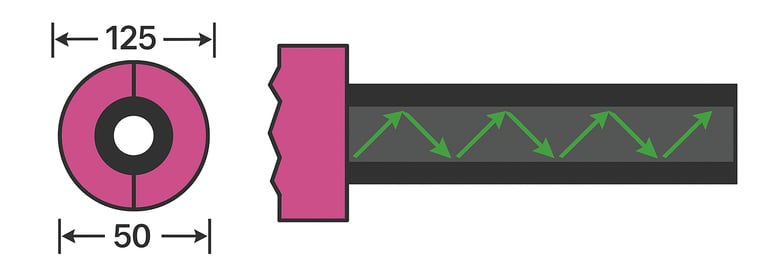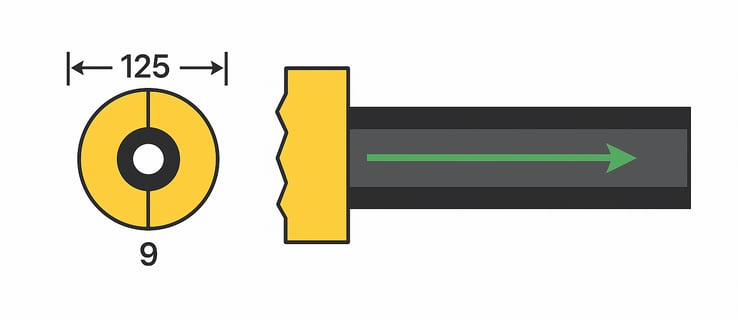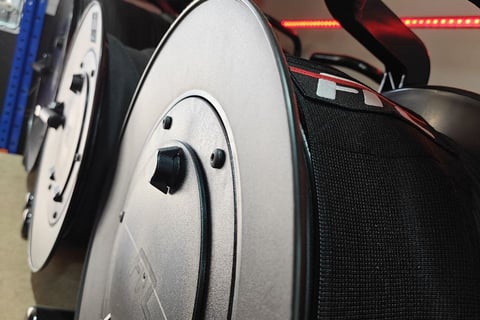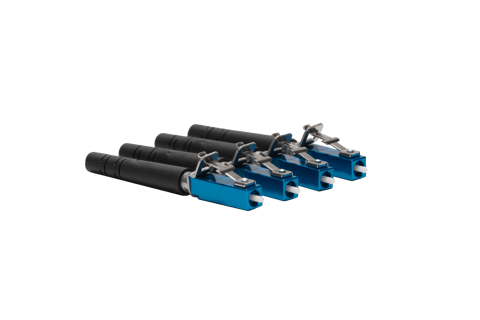Differences between MultiMode and SingleMode fiber | FTL fiber
Which fiber to choose for your events and facilities
Optical fiber is the world's most advanced and efficient transmission media for transporting data at high speed and with minimal loss. Within this technology, there are two main variants: single-mode fiber and multimode fiber. Although both are based on the transmission of light through a glass or polymer core, they have fundamental differences in their structure, optical behavior and applications. Let's take a look at their main characteristics and applications.


MultiMode Fiber Optic Characteristics
Multimode optical fiber is a type of optical transmission cable that allows several light rays (modes) to propagate simultaneously through its core. This is made possible by its larger diameter, typically 50 or 62.5 microns.
This design allows the transmission of signals over short to medium distances at reduced costs, since the emitters used (such as VCSELs or LEDs) are cheaper and more efficient than the high-precision lasers required in single-mode fiber.
Classification according to ISO 11801 standard
Multimode fibers are divided into five standardized categories in ISO 11801, called OM1, OM2, OM3, OM4 and OM5, where “OM” stands for Optical Multimode. This classification is based mainly on their modal bandwidth and their performance against high-speed transmissions. The colors of the cables being installed must comply with the TIA-598-C standard.
Evolution and applications by category:
OM1 / OM2: For years they were widely used in Ethernet networks (10 Mbit/s to 1 Gbit/s) due to their compatibility with LED emitters. They are still found in older networks or economical short distance installations.
OM3 / OM4: These are laser optimized fibers (LOMMF) and use VCSELs, capable of operating at 10 Gbps and above. These fibers have allowed the natural evolution to 40 and 100 Gbps networks. Ideal for FullHD, 4K converters and the new SMPTE ST-2110 protocols. They are a current standard.
OM5: Introduces support for wavelength multiplexing (WDM) in the 850-950 nm range, enabling multichannel parallel transmissions up to 100 Gbps and beyond. For 8K or high capacity converters.
Optical considerations: DMD and modal dispersion
One of the technical challenges of multimode fiber is modal dispersion, which occurs when different modes of light travel at different speeds, widening the pulses as they travel longer distances.
This phenomenon, known as DMD (Differential Modal Delay), is combated in LOMMF fibers by more precise manufacturing processes such as FTL, which eliminate imperfections that can cause variations in the propagation speed of the optical pulse. Precise manufacturing, point-to-point connectorization without optical events and perfect polishing are essential to avoid modal dispersion and achieve efficient propagation over long distances.
Advantages of multimode fiber
✔️ Reduced cost of transceivers and associated electronics
✔️ Ideal for medium distances (<500 m)
✔️ Simple and compatible installation
✔️ High speeds with OM3/OM4 without the need for complex multiplexers
✔️ Perfect for plug-and-play mounting in demanding environments
Conclusion
Multimode optical fiber is the best choice when looking for a balance between performance, cost and ease of deployment in short to medium distance environments, their high compatibility with all types of emitters make them ideal for cart or reel applications. Whether for professional audiovisual installations or events, temporary data networks or compact data centers, OM3 and OM4 fibers offer a robust, reliable and scalable platform for today's industry requirements.
*The speed and distance limits are theoretical and can be greatly exceeded with good fabrication, connectorization and polishing.
Single-Mode Fiber (SMF) is designed to allow only one mode of light (a single beam) to propagate through its extremely thin core (≈9 microns in diameter). Thanks to this, it virtually eliminates modal dispersion, allowing signals to be transmitted over very long distances and at very high speeds with minimal losses.


Designed to operate at typical wavelengths of 1310 nm and 1550 nm, single-mode fiber enables links up to 40 km without regeneration and even longer with amplified systems, such as EDFA or DWDM. It is the preferred technology for telecommunications, data centers, backbone links and long-distance audiovisual applications.
Single-mode fiber specifications
Evolution and applications of single-mode fiber
OS1: Designed for indoor applications with fibers in tight tube. Suitable for long links without exposure to extreme conditions. Common in buildings, racks and optical panels.
OS2: Fiber optimized for outdoor applications, with reinforced coatings and higher resistance to temperature, humidity and traction. It is the professional choice for permanent installations in large enclosures, links between buildings or long distance networks.
In audiovisual, OS2 fiber is the most widely used in long runs and RF for its mechanical robustness and consistent optical performance, even when cables are spooled, deployed or reused in multiple events.
Optical considerations: chromatic dispersion and optical window
Unlike multimode, where modal dispersion is the major challenge, in single-mode fiber it is chromatic dispersion that must be controlled. This phenomenon arises because different wavelengths travel at different speeds, causing a small pulse broadening.
Therefore, in high-performance single-mode fiber installations it is recommended:
Use coherent laser sources (DFB or DBF).
Adjust the optical window (1310 nm or 1550 nm) according to the distance and type of equipment.
Opt for APC connectors (8°) in sensitive environments (angled connector for minimum dispersion).
Advantages of single-mode fiber.
✔ Lossless transmission up to 40 km without regeneration
✔ Compatible with uncompressed video signals and high bitrate IP networks
✔ Unbeatable stability and fidelity on critical and extended links
✔ Ideal for high EMI environments or demanding installations
✔ Lower latency and better signal-to-noise ratio
✔ Ready for single link speeds in excess of 100 Gbps and DWDM technologies
Conclusion
Single-mode optical fiber is a good solution for high-end audiovisual infrastructures, where signal quality, distance and stability are priorities. Although it requires more precise laser transmitters and rigorous installation, its performance in critical conditions - such as large events, broadcast studios or permanent installations in race circuits or large fields - makes it the most accurate professional choice.
Its use ensures uncompressed signal transport, low latency, total electromagnetic immunity and consistent performance, even over decades.
Comparison Multimode Fiber Vs Singlemode Fiber
Practical comparison: when to use multimode or singlemode fiber?
The choice between multimode and single-mode optical fiber depends directly on the usage environment, distance and type of equipment to be used.
Multimode fiber is less expensive, easier to install and highly compatible with standard audiovisual equipment. That's why it is the preferred choice in most fiber carts for events, <500 m environments, temporary setups and plug-and-play applications. It allows taking advantage of low-cost LED or VCSEL emitters and facilitates rapid deployment without the need for dedicated electronics.
On the other hand, single-mode fiber offers superior optical accuracy and stability, when combined with suitable laser emitters and unique systems designed for its use. It is ideal for long distances, extensive permanent installations, links between technical rooms and environments where signal integrity is critical, such as uncompressed video, special formats or high-capacity audiovisual IP networks.
Both technologies are fully valid in the audiovisual sector. The key is to choose well according to the use:
Multimode for versatility and efficiency in mobile events.
Single-mode for maximum quality in critical or long-range links.






